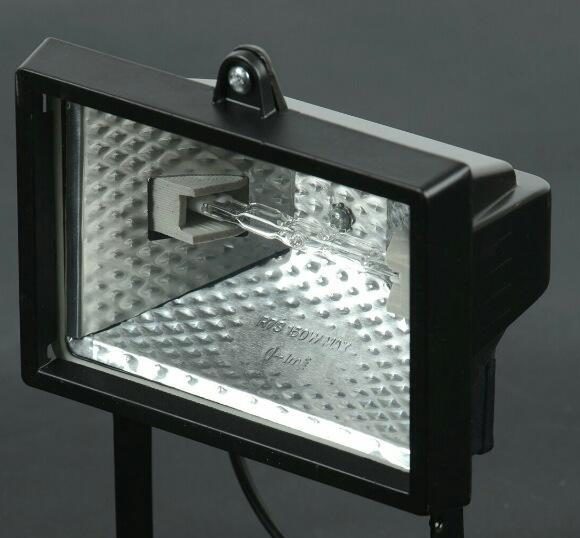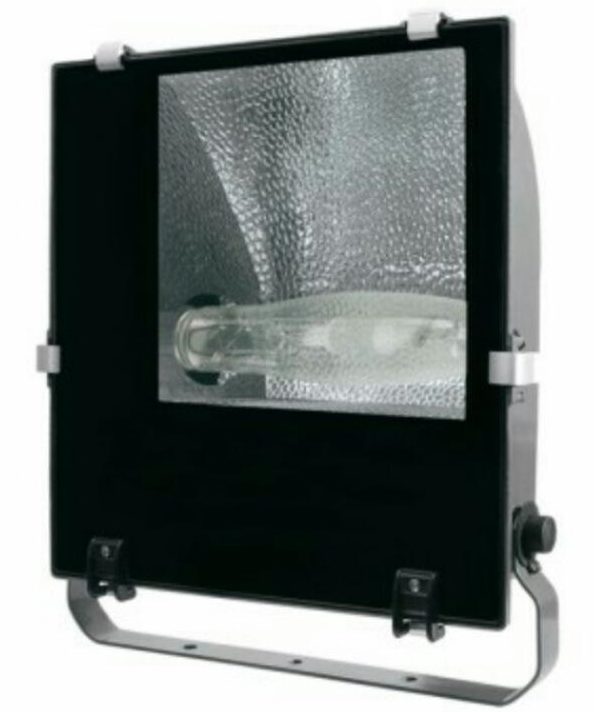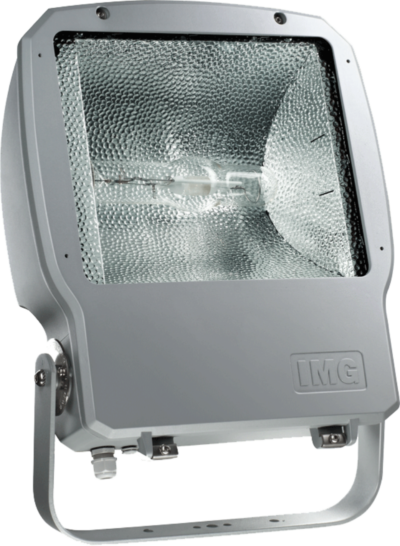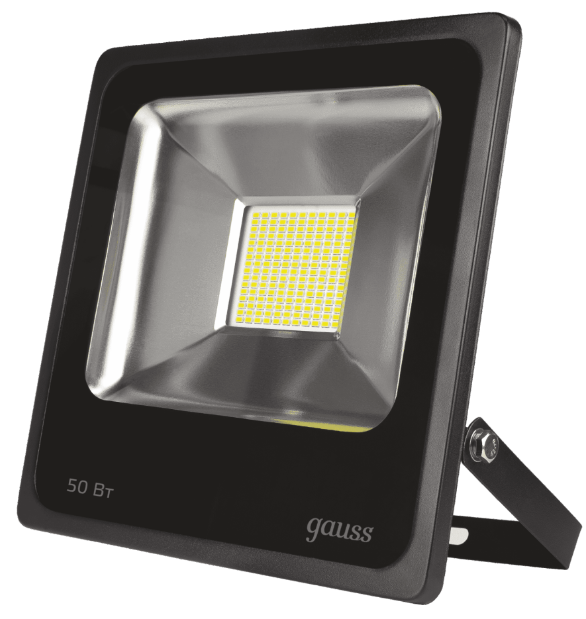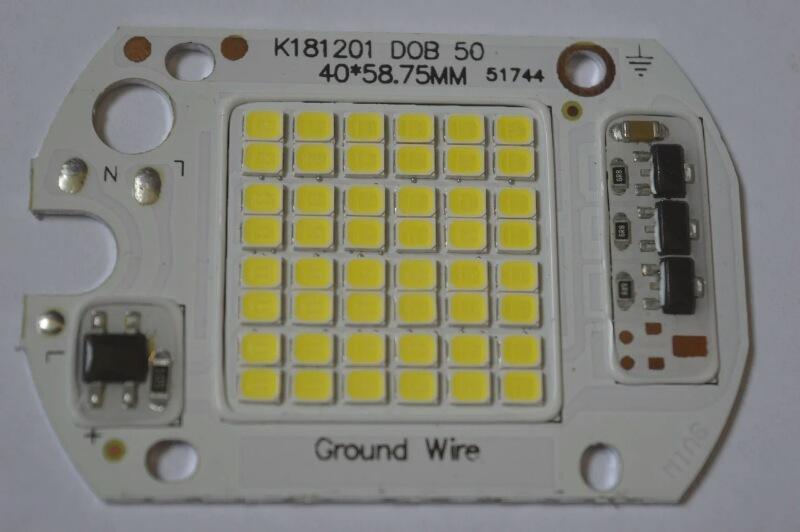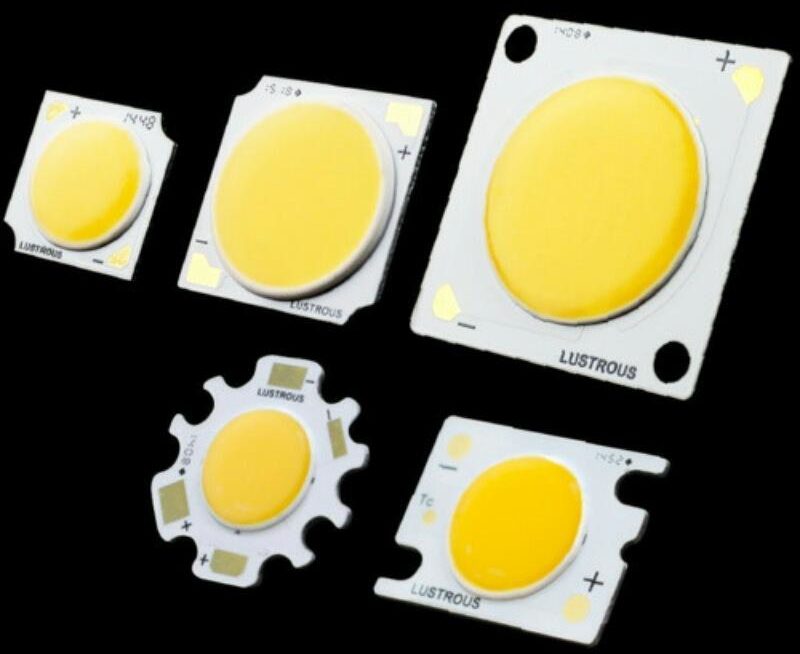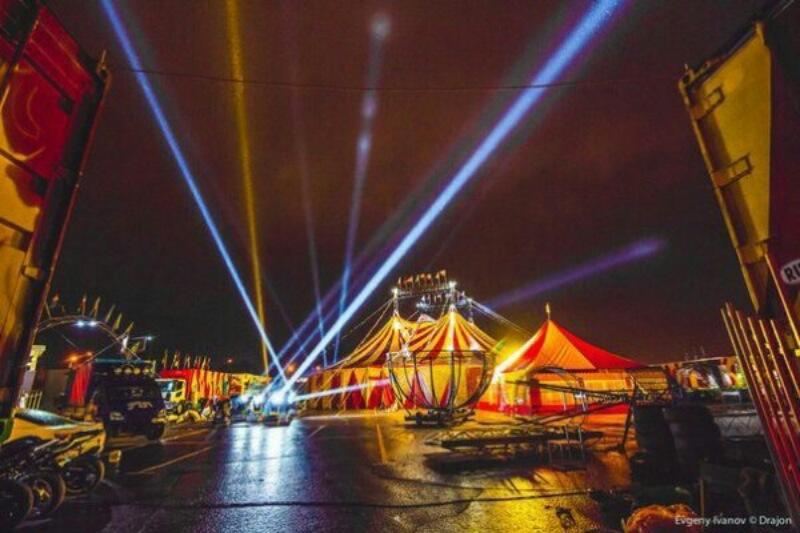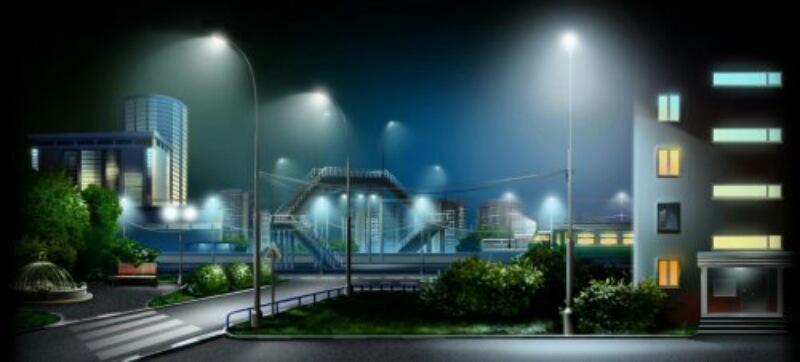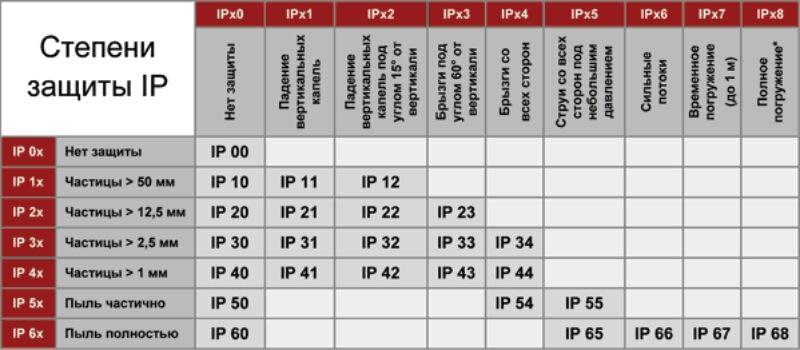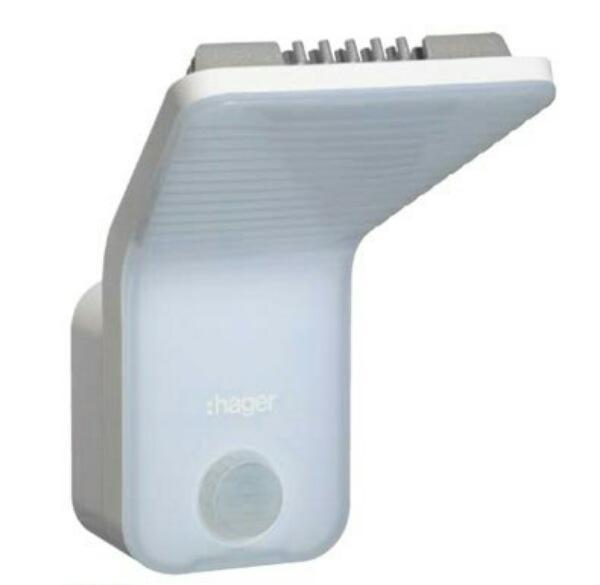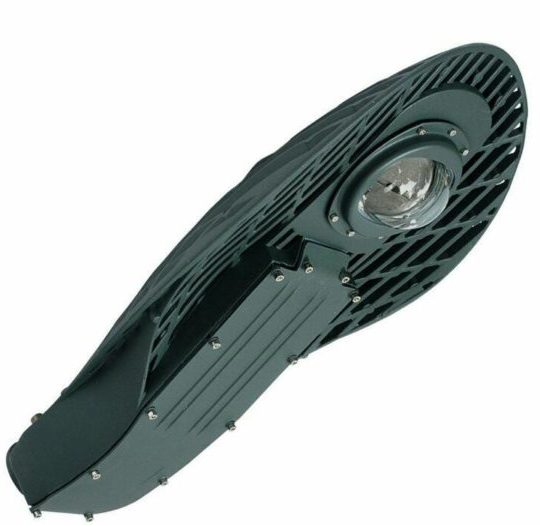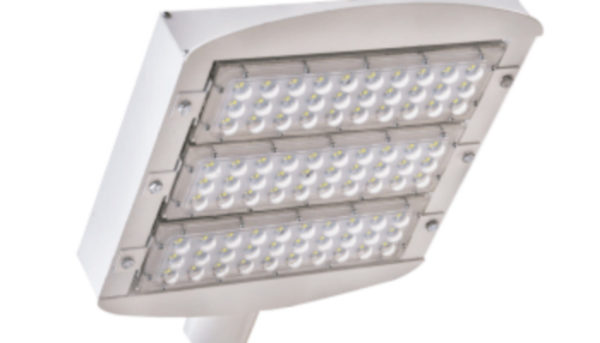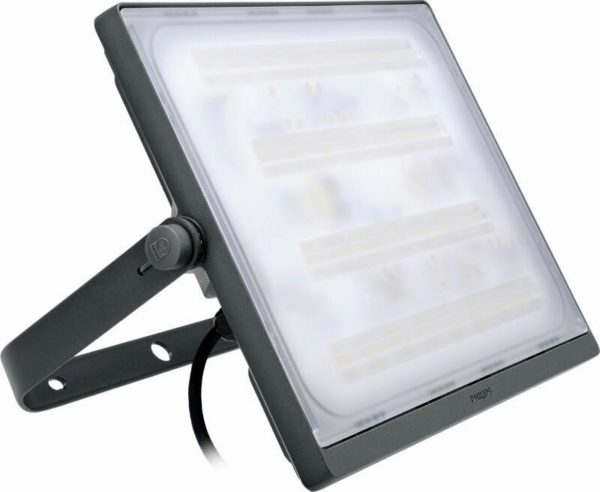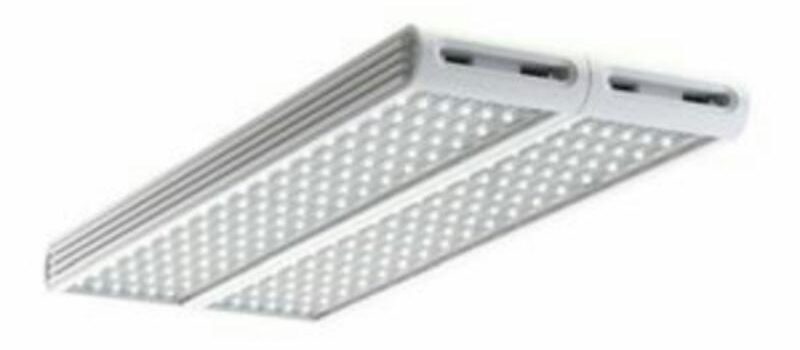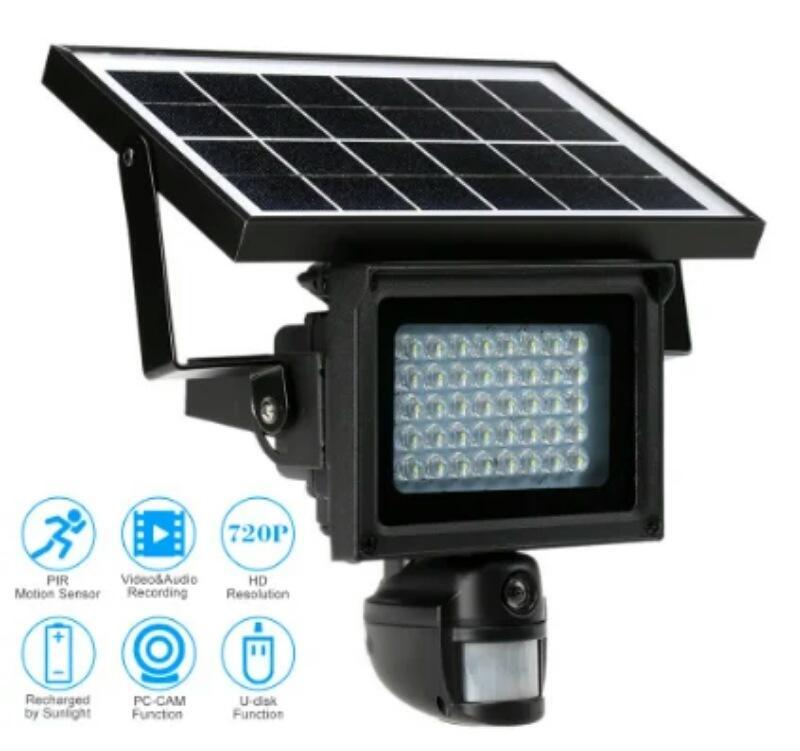Rules of choosing a spotlight
Lighting of large areas, including outdoors, is planned according to different principles than indoors. Firstly, the street is much less reflective surfaces, so it needs more light flux. Secondly, the device is affected by aggressive environmental factors, respectively, the entire structure needs to be protected from moisture and temperature fluctuations. And thirdly, projectors are usually located on poles, towers or under the canopy of houses, where the replacement of components is associated with a lot of inconvenience, which imposes requirements for their life. On the totality of all the characteristics and determine the choice for each specific situation.
What are there
Since incandescent lamps in street lighting projectors do not justify themselves in terms of efficiency and durability, new devices, distinguished by a different principle of action, appeared on the market of lighting equipment.
Halogen
A modification of the incandescent lamp with halogen gas vapor in the bulb. Halogens are inert to chemical and thermal processes, which slows oxidation of the tungsten filament and increases its efficiency by 30-40% over a conventional vacuum system. The bulb is demanding to be free of moisture and contaminants on the glass surface, and the electrical circuitry of the device needs a step-down transformer.
Metal halide
Metal halide lamps are Gas discharge mercury lamp In a double glass bulb. Inside the shell, in addition to mercury vapor, various metal halides are present to correct the spectrum. The device can only be started from the ignition unit, but the device itself operates from 220 V mains. Metal halide lamps are bulkier than halogens, the body together with the reflector is more massive, and their power consumption is greater, with relatively the same light output.
Sodium
The design, scheme and principle of operation is the same as that of metal halide, but sodium vapor is used as a light source, producing more luminous flux with the same power consumption.
LED
These are COB or SMD LED arrays in a housing with a driver or step-down transformer. Differs from previous types of lights of a smaller mass and dimensions with a longer service life and efficiency.
Criteria for choosing a spotlight
The choice of projector should be based primarily on the task. For example, it makes no sense to overpay for the most powerful available spotlight if you need to illuminate the entrance to the house. There is enough brightness not to stumble and take the keys out of the purse, and a low-powered bright lamp will only dazzle. On the contrary, if the task of the device is to work so that a person can read or work with small details without strain, then you already need spotlight a more powerful spotlight.
Voltage
Most spotlights are powered from 220 V, but the discharge lamps can only be started with chokeHalogen lamps need step-down transformers, while LEDs are powered by a 220 V line driver designed for direct plugging into a 220 V network. In some cases there is no driver in the kit and to power the LED will have to buy a rectifier for 12 or 18 volts. As a rule, all the additional elements of the scheme are placed in a street lamp and externally the device operating from 220 or 12 volts is not distinguishable, so information about the type of power must be clarified.
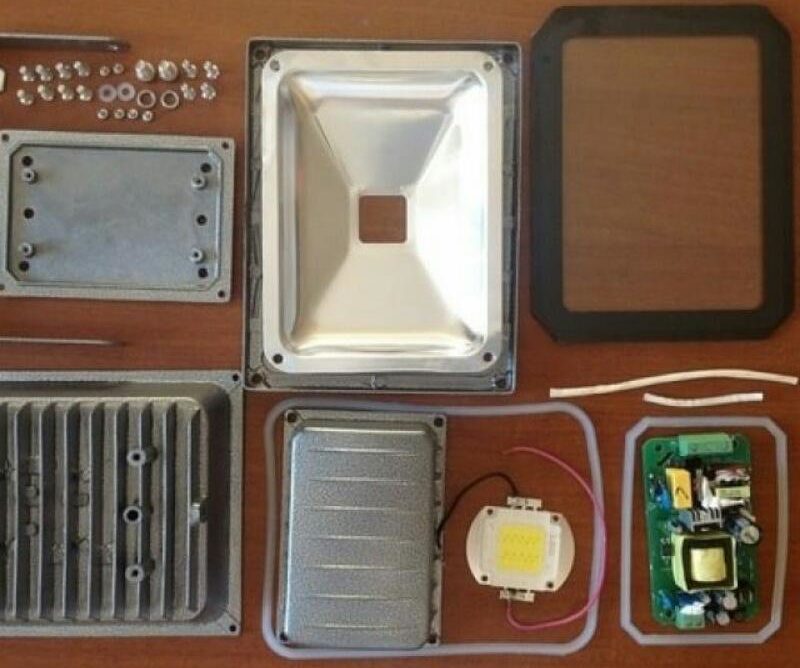
LED-cells with a Chinese driver, where the role of rectifier current is performed by a diode bridge, with surges in the range of 200-250 V sometimes start to blink or burn out. The most unpretentious in this regard are halogens, although a quality driver with a stabilizer ensures the operation of LEDs even in the extreme range of 60-300 V.
Power
Traditionally, the main indicator of the effectiveness of the matrix is considered the power of the matrix - the level of its power consumption, measured in watts. On the power depends to some extent on the level of light output. That is, the more powerful, the brighter and farther the unit shines. Traditionally, it is the power to calculate the distance and the area that the spotlight is able to illuminate.
| Lamp models | Power, W | Height of suspension, m | Height of light spot, m | Light spot length, m |
| LED 30 | 30 | 4-5 | 8-10 | 14-17 |
| LED 50 | 50 | 6-8 | 12-16 | 21-28 |
| LED 100 | 100 | 10-12 | 20-24 | 35-42 |
LED spotlight power calculation table.
To illuminate a site of 25 m2 from the height of a five-meter lamppost enough LED spotlight power of 35-40 watts, but you should consider that the light output of different LED-elements with the same power consumption varies greatly and these figures are subjective.
Types of LEDs
Two types of LED lamps are used for high-power devices:
- SMD .-matrices - consist of a group of LEDs of the same power, summed up to achieve the desired level of light output. The disadvantage of this solution is that if one of the bulbs burns out, then the entire matrix fails, and soldering a jumper leads to increased load on the remaining LED-lamps. As a result, they burn out exponentially.SMD matrix appearance.
- COB - Cluster LEDs, which are a solid crystal. Compared to SMD, they produce a more uniform light flux. This system is not without its disadvantages. Firstly, these lamps are hotter and need a powerful heat sink. Secondly, their cost is 20-30% higher than the SMD.COB type diodes.
Cluster LED elements are not widespread due to the cost, and the vast majority of lighting fixtures work exactly on the matrix lamps.
Diffusion angle
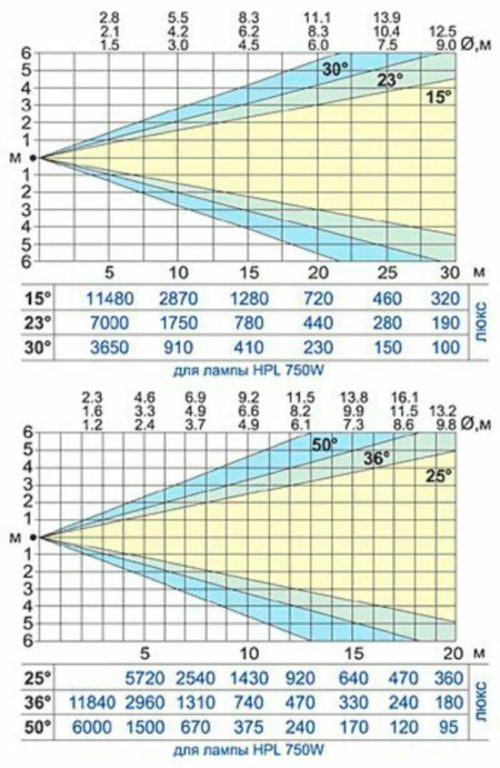
By the example of two lamps of the same power you can see that the width of the central spot and lateral illumination are different. In street lamps, this parameter is not adjustable, because it was originally set by the shape of the reflector. Conventionally according to the angle of scattering projectors are divided into:
- search - Long-range lights with a concentrated beam of light and a minimum of side illumination. They are used on watchtowers, Open Air entertainment shows, in stage lighting;
- flooded - With the uniform, wide-angle light needed in most outdoor lighting applications.
IP rating
Streetlights require protection from external physical factors with a degree of protection of at least IP54. The first number stands for dust protection, the second for moisture protection. Maximum degree IP68 means complete sealing of the construction with possibility of submergence under water for more than 1 hour.
Luminous flux
The main parameter reflecting the actual efficiency of the LED chip and measured in lumens. However, for lighting calculations for a certain square footage, a parameter such as lux is used, which is the amount of luminous energy in a certain area.
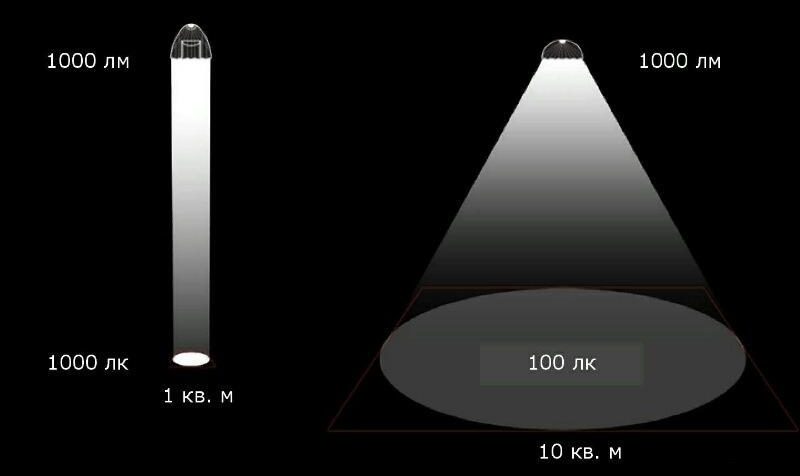
From five meters this parameter will be reduced to 20 lux, which is enough to see where to go, but not enough for precise work. Full formulas for calculations are quite complex and special programs are used for this purpose, but indicative figures are presented in the lighting table for road lighting.
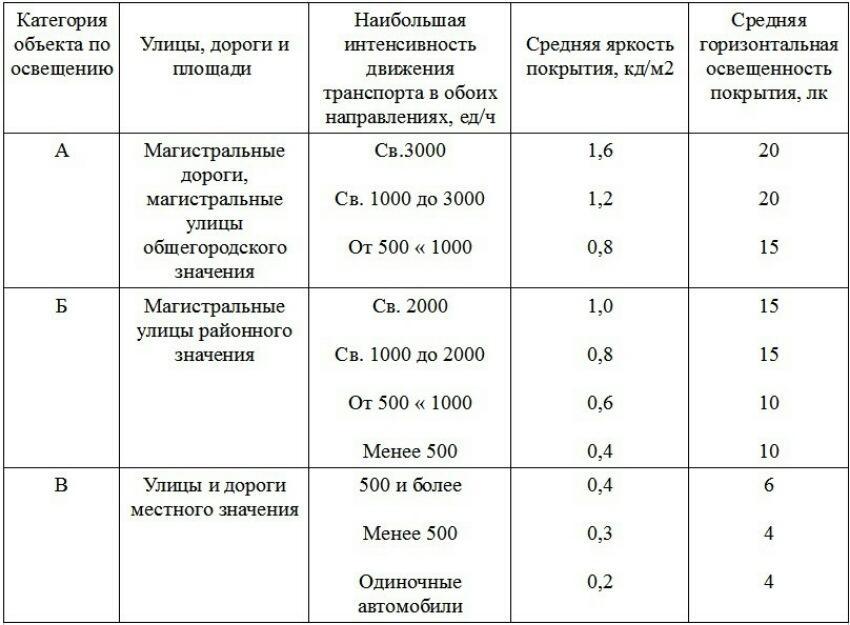
You can only find out how much lux a particular specimen produces by experimenting with a luxmeter. This is done at night, with the device set at a given height and the direction of light to the luxmeter, located in the center of the light spot.
Particulars of choice
Most buyers and sellers focus primarily on the power of the spotlight. This approach is fundamentally wrong, because at the same power different lights give different amount of luminous flux, depending on the characteristics of the LED-chip. For example, to illuminate the entrance to the garage from a height of 3 meters is enough 10 W lamp, assuming that the energy efficiency of the LED is 100 lumens / watt. This is the average efficiency of the LED lamp. That is, the product datasheet should have about 1000 lumens per 10 W. If this value is lower, the LED will heat up more and shine weaker than others., with less power but the same luminous flux.
According to the law of conservation of energy, the more energy is spent on light, the less is left for heat and vice versa. The best ratio of power to luminous flux 130 lumens/watt, but such lamps are demanding to the quality of the driver, without which they will not last long.

The body of the street spotlight should be made of metal, because plastic does not provide sufficient heat dissipation. In addition, under prolonged exposure to direct sunlight, plastic becomes brittle, deforms, resulting in a violation of the tightness of the design.
Some lanterns are equipped with motion and light sensors, turning on at night and off in the morning or reacting to approaching moving objects. This saves energy, saves the resource of the device, and also frees the owner from the need to monitor the operation of lighting devices. There are fully autonomous systems with solar panels and a power storage unit. The device is charged during the day and uses battery power at night.
The reliability of these projectors depends on all components, especially the battery, because after a year of operation the level of the Chinese storage battery gives a drawdown, and in winter it discharges 2-3 times faster. Some standalone systems are combined with a video recorder, which in the complex is a security system, turning on the light and recording video in case of motion within the range of the sensors.
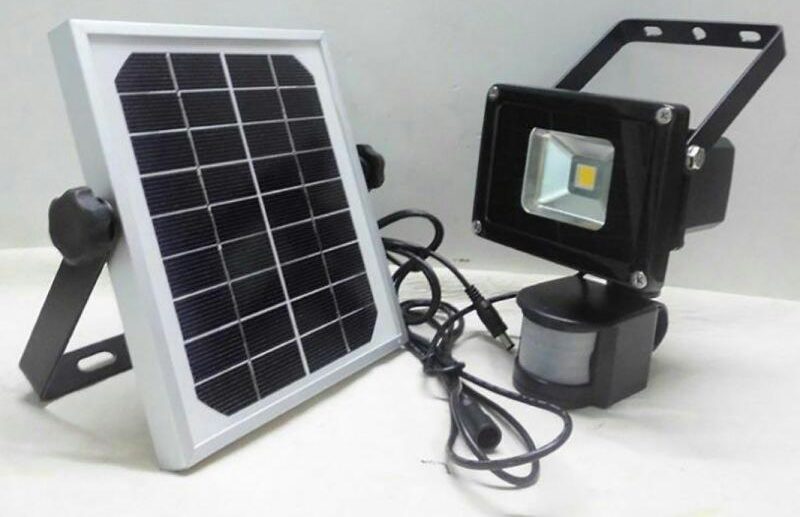
Trying to choose a bright LED spotlight, it is better to pay attention to the warmth of the glow specified in the characteristics of the product. If the task is to to illuminate areas around the housefacades of buildings or the work area, it is better to choose a model with a warm glow up to 4000 K. Warm or natural light does not tire the eyesight and color rendering is not distorted.

Chinese diodes often make exactly cool glowbecause they produce more lumens per watt. For precision work with small parts you need a light level of at least 40 lux. For lighting large areas, industrial facilities, parking lots, security areas fit a bright cool light in the range of 5000-6500 K with a light intensity of 20 to 40 lux.
Rating of LED spotlights
5th place Hager EE610
Place 5 rating is the model from the German brand in the style of hightech. The 15W power output produces 1100 lumens, which at 4000 K is quite enough for outdoor areas, residential areas. The housing is made of high quality polycarbonate with IP55 rating. Specifications at first glance are not the most impressive, but indicated with the utmost honesty. The illuminator is equipped with a motion sensor. Mounting is quick-release, on the landing platform. The disadvantages are the difficulty to adjust the direction and the price.
4th place Jooby Cobra 60W
4th place for the Ukrainian unit of aluminum alloy with Japanese components, including the Citizen diode 50W, yielding 5500 lumens of cold light. Designed to illuminate parks, security areas, squares, adjacent areas. Degree of protection IP65, the voltage regulator withstands spikes in the network from 85 to 265 volts. It is noteworthy that the warranty on the unit is issued for five years, which is a record for the local assembly, but corresponds to the quality of Japanese parts.
3rd place Osram M3 90W
The top three is a unit of Russian assembly with German components and Japanese LEDs Nichia, a total capacity of 90 watts, producing 11,700 lumens at a neutral temperature. Aluminum housing with IP66 protection class. The claimed lifespan is 12 years, but the warranty is only for 2 years, which belongs to the disadvantages. However, this unpretentious design is quite reliable and consumers have no problems with it. The light is mounted on a console with a fixed directional angle.
2nd place Philips BVP176 LED190
Made in the Netherlands or in China, but under the control of Dutch technologists street light is one of the best among the lighting fixtures in its category. The 200V output is quite consistent with a light output of 19,000 lumens, while the emission color is warm - 3000K. Cast aluminum and polycarbonate lens protects the device at IP65 level against dust and water jets. The only drawback is the possibility of incorrect operation when reaching the minimum operating temperature of -40°C and overpaying for the brand.
1st place Geniled element 100W
Leader of the top is a Russian manufacturer, one of the most honest in terms of compliance with the stated parameters to the actual figures in the test. The unit produces 100 lumens/watt of cold light at 5000 K. Aluminum housing with IP65 protection has the ability to mount in three ways: on the console (pipe), on a rotating bracket or on a pendant. Spotlight is stable working in the temperature range from +50 to -45°C. The warranty service is provided for 3 years. Of the drawbacks - a relatively cold glow, but given the local assembly, you can order the device in a complete set with warmer LEDs.
